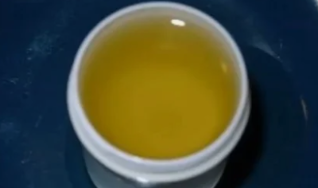Varicose veins are a pathological process characterized by the expansion of the vessels that transport blood to the heart, their deformation, as well as the development of valve insufficiency with subsequent dysfunction. A clear sign of the disease is the veins protruding from the surface of the skin, their tuberosity, the appearance of trophic ulcers.
But the main danger of varicose veins is stagnation of the blood and the development of thrombophlebitis, that is, disorders of the blood circulation process. For the complete treatment of the disease, a set of measures is used, among which drug therapy and surgery are the most in demand and effective. In addition, ointments and gels for varicose veins are very often used as an auxiliary treatment, and we will talk about them.
Purpose and types of ointments for varicose veins
First of all, I would like to point out that ointments and gels are used at all stages of the development of the disease and, depending on the period of application, they are intended to provide a different effect:

- In the initial stages of varicose veins, gels and ointments help to slow down the progression of the pathological process, avoiding the deformation of the blood vessels and the thinning of the vascular walls.
- In the later stages, the goal is also to prevent the disease from progressing. However, in addition, topical products help improve blood circulation, prevent severe congestion, and are also intended to combat symptoms such as pain, swelling, cramps, changes in skin pigmentation, and much more.
- In addition, doctors often prescribe the use of ointments and gels after surgical treatment of varicose veins. In this case, it is possible to achieve an acceleration of the rehabilitation period, healing not only superficial tissues, but also internal structures. In addition, depending on the properties of the drug, certain gels and ointments relieve possible swelling, reduce inflammation, and stop other unpleasant effects caused by some types of surgery.
Among the ointments and gels, there are drugs that are divided into several groups. The choice of medication should be based on clinical signs, which may be the following:
- Increased leg fatigue, painful sensations, feeling of tightness;
- Inflamed veins (this symptom accompanies almost all stages of varicose veins, the severity of the symptom is important);
- Swelling, its intensity;
- Seizures, usually at night;
- Change in skin pigmentation, the skin may acquire a bluish tint.
It is also important to understand that using ointments or gels cannot cure varicose veins, but these remedies can actually reduce the intensity of individual symptoms, slightly improve the condition of the blood vessels, and prevent the development ofpathologies.
Also, before using any of the medications described below, you should consult a phlebologist.
Phlebotonic
The drugs of this group form the basis of medical treatment of varicose veins, they are prescribed both in the form of tablets and in the form of ointments. These drugs are designed to improve blood circulation, which prevents stagnant processes. They increase the outflow of lymph and vascular tone, to some extent reduce the intensity of edema, and also eliminate the feeling of heaviness and fatigue in the legs.
Anticoagulants
Its main property is blood thinning, which is very important in certain stages of varicose veins, as well as in cases where the pathology progresses against the background of an increase in the concentration of platelets in the blood. Due to the fact that the blood becomes less viscous, the process of its circulation through the vascular bed is facilitated, respectively, the blood circulation process is normalized, and stagnant processes are eliminated. Additionally, anticoagulants prevent blood clots from forming.
Taking into account the properties described, the drugs in this group help reduce edema in the legs, eliminate pain by relieving congestion and combat the feeling of constriction and fatigue. In addition, anticoagulants prevent the development of complications, such as thrombophlebitis or the formation of trophic ulcers.
Anti-inflammatory

A phlebologist, based on the obtained diagnostic data, can prescribe local anti-inflammatory drugs in the form of ointments or gels to a patient with varicose veins.
A striking example is non-steroidal anti-inflammatory drugs (NSAIDs), which effectively eliminate painful sensations, in addition to having a pronounced anti-inflammatory effect.
Ointments based on natural ingredients
Such drugs are mainly prescribed in the initial stages of varicose veins, are used to treat pregnant women, or replace the drugs described above to take a break from the course of treatment.
This is due to the fact that products based on natural components, more often vegetable, act with less moderation. In addition, they can be used continuously, unlike drug groups that are used in a course, after which it is important to take a break.
The difference between ointments and gels
In fact, medicated ointments and gels that you buy at the pharmacy are similar drugs. They are applied in the same way if they are drugs from the same group, they have the same therapeutic effect, in addition, they even contain the same chemical components.
As for the differences, they are few and far between:
- Ointments are made from fats, both vegetable and animal. It is also important to understand that the active ingredients in ointments do not dissolve completely, retaining their original chemical structure. Due to these characteristics, the ointment should be rubbed into the skin more carefully, and even after that it is necessary to wait 5-15 minutes until it is completely absorbed, otherwise the therapeutic effect will be incomplete;
- A distinctive feature of the gels is the fact that they are water-based and the medicinal components of their composition are completely dissolved. Thanks to these factors, the gel is absorbed much faster.
As mentioned above, any medication, including ointments and gels for varicose veins for external use, must be prescribed by the attending physician.























